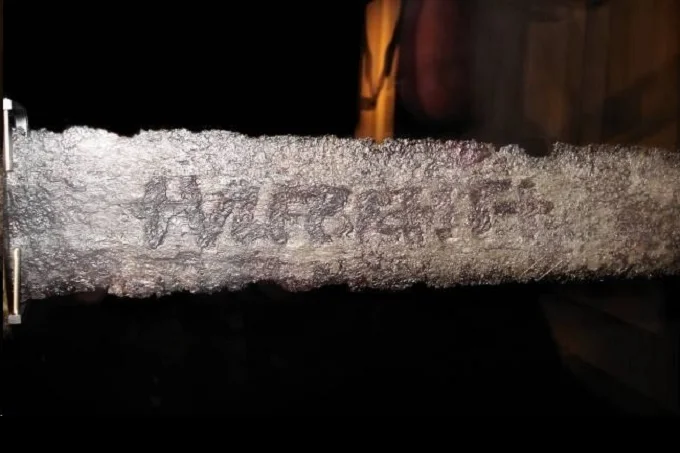Ulfberht: Ancient Viking swords made with high technology

The Viking swords bearing the name “Ulfberht” were made of such pure metal that it has puzzled archaeologists. The technology for making such metal was not thought to have been invented until 800 years later, during the Industrial Revolution.
Approximately 170 specimens of Ulfberht swords have been found, dating back to between 800 and 1000 AD. A documentary produced by NOVA and National Geographic called “Secrets of the Viking Sword” was first shown in 2012, it drew attention to the mysterious sword and its composition.
In the process of forging iron, the ore must be heated to 3,000 degrees Fahrenheit to make it a liquid, allowing the smith to remove impurities (slag). Carbon is also added to the alloy to make the brittle iron stronger. Medieval technology did not allow the iron to be heated to such a high temperature, so the slag was removed by grinding, a less efficient method.
The Ulfberht sword, however, has almost no slag and has three times the carbon content of other metals available at the time. It was made of what was called crucible steel. Furnaces invented during the Industrial Revolution were believed to be the first tools to heat iron to this degree.
Modern-day blacksmith Richard Farrer of Wisconsin told NOVA about the difficulty of making such a sword. Farrer is portrayed in the documentary as one of the few people on the planet with the skills necessary to attempt to make an Ulfbert sword.
“Making it right is the most difficult task I have ever had to undertake,” he said, adding that the maker of the “Ulfberht” apparently had magical powers. “To make a weapon out of the ground is a pretty powerful thing.” And to make a weapon that can bend without breaking, stay sharp and weigh very little is something supernatural.

Farrer spent many days painstakingly crafting such a sword. He used medieval technology. The slightest imperfection or mistake could turn a sword into a piece of scrap metal. He announced his success at the end, more with relief than joy.
It is possible that the material and technology of this sword came from the Middle East. There was a trade route along the Volga River that connected Viking settlements and the Middle East, it opened at the same time as the first Ulfberts, and the last Ulfberts were made when the trade route was closed.




